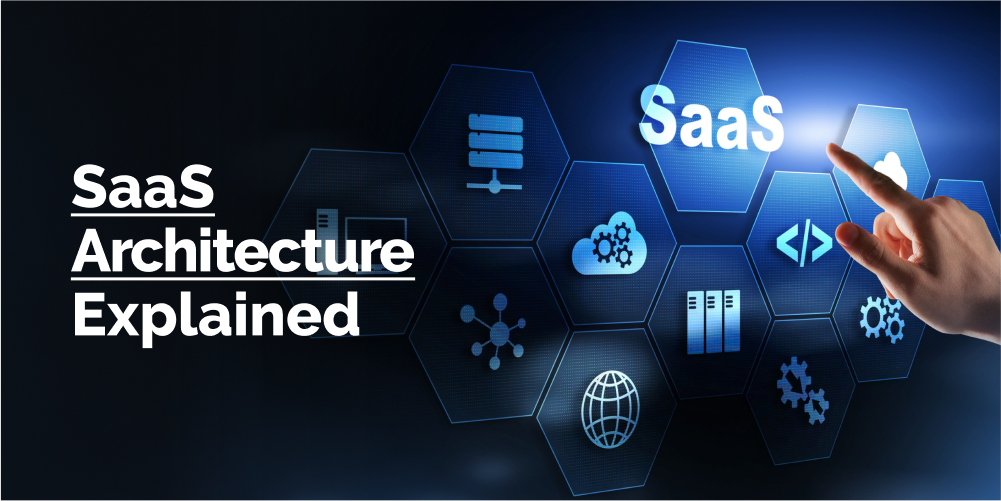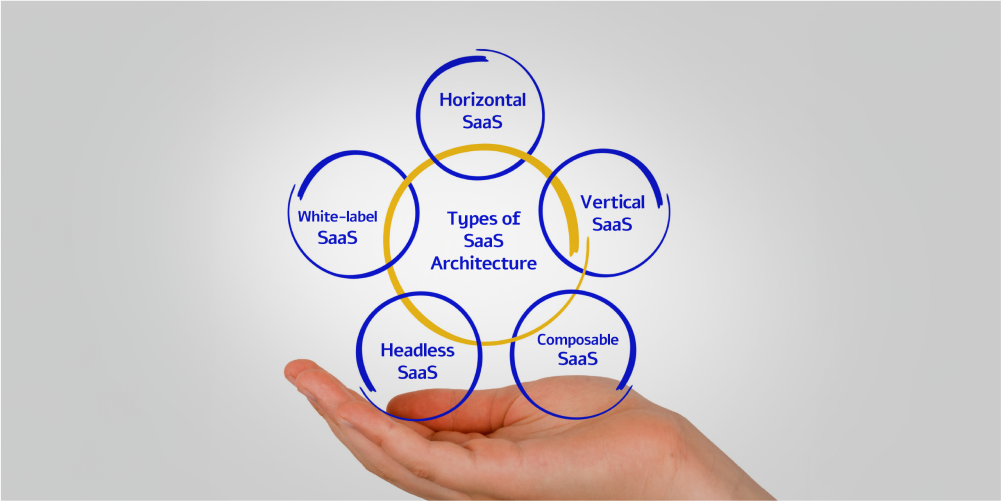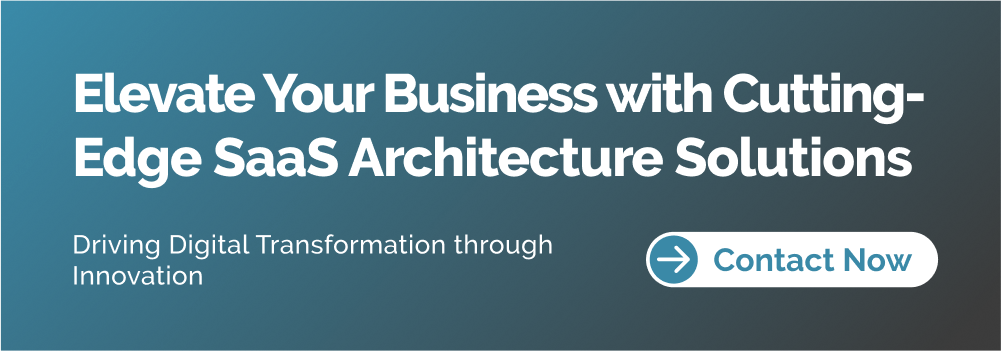SaaS, zBlog
SaaS Architecture: Types, Tenancy Models, Benefits, and More
atif | Updated: April 24, 2024

Introduction
In the ever-evolving landscape of software delivery, the Software-as-a-Service (SaaS) model has emerged as a game-changer, revolutionizing the way businesses acquire and utilize software applications. SaaS architecture, the underlying foundation that enables this transformative model, has become a critical focus for organizations seeking to leverage the power of cloud computing, scalability, and cost-effectiveness.
This comprehensive article will delve into the intricacies of SaaS architecture, exploring its various types, tenancy models, and the benefits it offers to both software providers and end-users. We’ll also examine the key components that make up a robust SaaS architecture, the challenges faced during implementation, and the best practices that ensure a seamless and efficient SaaS experience.
Understanding SaaS Architecture
SaaS architecture refers to the underlying infrastructure and design principles that enable the delivery of software applications over the Internet, typically through a subscription-based model. Unlike traditional on-premises software installations, SaaS applications are hosted and maintained by the service provider, eliminating the need for customers to manage complex hardware and software deployments.
At its core, SaaS architecture is built on a multi-tenant architecture, where a single instance of the software application serves multiple customers or tenants simultaneously. This approach allows for efficient resource utilization, scalability, and cost-effectiveness, as the provider can leverage shared computing resources to serve a large user base.
Types of SaaS Architecture

SaaS architecture can be categorized into several types, each with its own unique characteristics and use cases:
- 1. Horizontal SaaS: Horizontal SaaS applications are designed to serve a broad range of industries and customers with a standardized set of features and functionality. Examples include customer relationship management (CRM) systems, project management tools, and office productivity suites.
- 2. Vertical SaaS: Vertical SaaS applications cater to specific industries or domains, offering tailored functionality and features to meet the unique requirements of those sectors. Examples include healthcare management systems, legal practice management software, and industry-specific analytics platforms.
- 3. Composable SaaS: Composable SaaS architecture represents a modular approach, where different components or services are combined to create a customized SaaS solution. This allows for greater flexibility and scalability, enabling organizations to assemble the specific functionalities they require.
- 4. Headless SaaS: Headless SaaS architecture separates the back-end functionality from the front-end user interface, enabling developers to build custom user experiences while leveraging the core capabilities of the SaaS application.
- 5. White-label SaaS: White-label SaaS solutions allow resellers or partners to rebrand and customize the SaaS application, offering it as their own product or service to their customers.
Tenancy Models in SaaS Architecture

The multi-tenant nature of SaaS architecture gives rise to various tenancy models, each with its own advantages and trade-offs:
- 1. Single Tenancy: In a single tenancy model, each customer or tenant has a dedicated instance of the SaaS application, ensuring complete isolation and customization capabilities. This approach offers increased security and control but can be more resource-intensive and costly.
- 2. Multi-Tenancy:Multi-tenancy is the most common tenancy model in SaaS architecture, where a single instance of the application serves multiple tenants simultaneously. This approach offers higher resource utilization and cost-effectiveness but requires careful consideration of data isolation, security, and performance.
- 3. Hybrid Tenancy: Hybrid tenancy models combine aspects of single and multi-tenancy, allowing for shared resources and configurations while providing dedicated instances or components for specific tenants or use cases.
- 4. Virtual Tenancy: Virtual tenancy is a variation of multi-tenancy, where tenants share the same application instance but have isolated data and configurations through virtualization techniques, providing a balance between resource sharing and isolation.
Benefits of SaaS Architecture

The adoption of SaaS architecture offers numerous benefits to both software providers and end-users, driving its widespread adoption across various industries:
- 1. Scalability: SaaS architecture is designed to scale seamlessly, allowing providers to quickly and easily provision resources to accommodate increasing demand or usage spikes without the need for complex infrastructure upgrades.
- 2. Cost-efficiency: By leveraging shared resources and a pay-as-you-go pricing model, SaaS solutions can significantly reduce upfront costs and ongoing maintenance expenses for end-users, making advanced software capabilities accessible to organizations of all sizes.
- 3. Accessibility: SaaS applications are accessible from any internet-connected device, enabling remote access and collaboration, which is particularly beneficial in today’s distributed work environments.
- 4. Automatic Updates: Software updates and enhancements are automatically deployed and managed by the provider, ensuring that all users have access to the latest features and security patches without the need for manual intervention.
- 5. Reduced IT Overhead: With SaaS, the burden of maintaining and managing software infrastructure falls on the provider, freeing up valuable IT resources for end-users to focus on their core business objectives.
- 6. Rapid Deployment: SaaS solutions can be deployed and made available to users quickly, minimizing the time-to-value and enabling organizations to rapidly adapt to changing business needs.
Key Components of SaaS Architecture

A robust SaaS architecture typically consists of several key components that work together to deliver a seamless and efficient user experience:
- 1. Multi-Tenant Database: The multi-tenant database is the backbone of SaaS architecture, providing a centralized repository for storing and managing data from multiple tenants while ensuring proper isolation and security.
- 2. Application Layer: The application layer encompasses the core functionality and business logic of the SaaS application, handling user interactions, data processing, and integration with other components.
- 3. Caching and Load Balancing: Caching mechanisms and load-balancing techniques are essential for ensuring optimal performance and scalability, particularly in high-traffic scenarios or during peak usage periods.
- 4. Identity and Access Management (IAM): IAM components handle user authentication, authorization, and access control, ensuring that only authorized users can access the SaaS application and its data.
- 5. Monitoring and Analytics: Monitoring and analytics tools provide insights into application performance, usage patterns, and user behavior, enabling providers to identify and address issues proactively and make data-driven decisions.
- 6. Integration and APIs:SaaS architectures often include integration capabilities and Application Programming Interfaces (APIs) that enable seamless integration with other systems, data sources, and third-party services.
Challenges and Best Practices in SaaS Architecture

While SaaS architecture offers numerous advantages, it also presents unique challenges that must be addressed to ensure a successful and reliable implementation:
- 1. Data Security and Compliance: Ensuring the security and privacy of sensitive data is a critical consideration in SaaS architecture, particularly in regulated industries or when dealing with sensitive information.
- 2. Performance and Scalability: As the user base grows, maintaining consistent performance and ensuring seamless scalability can become a challenge, requiring careful planning and resource management.
- 3. Customization and Extensibility:Balancing the need for customization and extensibility with the inherent standardization of SaaS solutions can be a delicate balancing act, requiring modular designs and flexible architectures.
- 4. Multi-Tenancy Challenges: Managing and isolating tenant data, configurations, and resources while maintaining efficient resource utilization is a key challenge in multi-tenant SaaS architectures.
- 5. Integration and Interoperability: Enabling seamless integration with existing systems and ensuring interoperability with third-party services and APIs can be complex, requiring robust integration strategies and adherence to industry standards.
To address these challenges and ensure the successful implementation of SaaS architecture, organizations should adopt best practices such as:
- Leveraging cloud-native architectures and containerization technologies for scalability and flexibility.
- Implementing robust security measures, including encryption, access control, and regular security audits.
- Adopting DevOps practices and continuous integration/continuous deployment (CI/CD) pipelines for rapid iteration and deployment.
- Designing modular and extensible architectures that allow for customization and integration with third-party services.
- Implementing comprehensive monitoring and analytics solutions to gain insights into application performance and user behavior.
- Developing and adhering to data governance policies and compliance frameworks to ensure data privacy and regulatory compliance.
Trantor – Enabling Digital Transformation with SaaS Expertise
At Trantor, we recognize the transformative power of SaaS architecture and its ability to drive digital transformation across various industries. As a leading provider of SaaS solutions and cloud-based services, we have built a comprehensive suite of offerings that leverage the latest advancements in SaaS architecture to deliver innovative, scalable, and cost-effective solutions to our clients. Our team of experienced architects and engineers has a deep understanding of the various SaaS architecture types, tenancy models, and best practices, enabling us to design and implement tailored solutions that meet the unique needs of our clients. From horizontal SaaS applications serving a broad customer base to vertical SaaS solutions catering to specific industry requirements, we have the expertise to deliver robust, secure, and scalable platforms.
At Trantor, we embrace the principles of composable SaaS architecture, allowing us to build modular and extensible solutions that can be easily customized and integrated with existing systems and third-party services. Our headless SaaS offerings empower organizations to create unique and engaging user experiences while leveraging the power of our underlying cloud-native architecture. Security and compliance are at the forefront of our SaaS architecture design, with robust data protection measures, access controls, and adherence to industry-specific regulatory frameworks. We understand the critical importance of safeguarding sensitive information and ensuring the privacy of our client’s data.
Our SaaS solutions are built on a foundation of scalability, leveraging cloud computing technologies and auto-scaling capabilities to seamlessly handle increasing demand and usage spikes. This ensures that our clients can focus on their core business objectives without worrying about infrastructure constraints or performance bottlenecks. Moreover, we prioritize continuous innovation and improvement, with dedicated research and development teams exploring emerging technologies and architectural patterns to enhance our SaaS offerings. Our commitment to DevOps practices and continuous integration/continuous deployment (CI/CD) pipelines enables us to rapidly deliver new features and updates, ensuring that our clients stay ahead of the curve.




